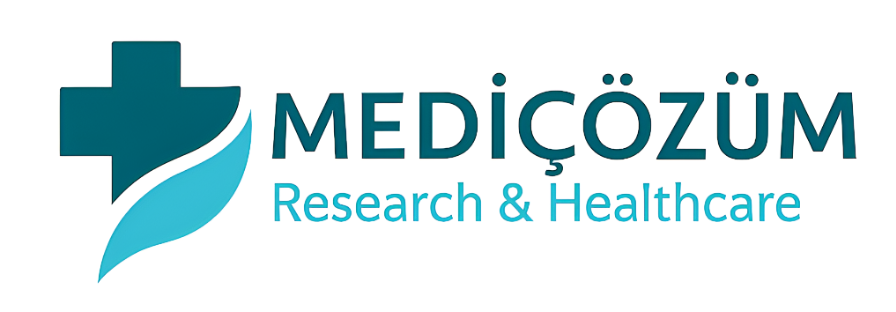Maternal and Perinatal Outcome in Multifetal Gestation in Rural Population: A Hospital Based Prospective Study
DOI:
https://doi.org/10.21276/yybfjw67Keywords:
Maternal outcome, Perinatal outcome, Multifetal gestation, PregnancyAbstract
Background: Living in a rural or remote location can make access to advanced obstetric and neonatal care difficult and may increase the risk of severe maternal and perinatal morbidity. This retrospective observational study of 30 women with twin pregnancy was conducted to evaluate pregnancy related complications in the mother and neonatal outcome in a rural population.
Materials & Methods: This retrospective study was conducted at Shri Jawahar Government district Hospital, Jaisalamer, Rajasthan. 30 consecutive women with twin pregnancies that were admitted either as registered antenatal patients or referral cases were studied. Individual patient parameters like age, parity, duration of gestation, physical examination, mode of delivery, antepartum, intrapartum and postpartum complications were tabulated. Neonatal morbidity and mortality in the first week were also noted.
Results: Majority of patients (60%) studied were in the age group of 26 – 35 years (mean age – 29 years). Preterm labor was the most frequently encountered complication seen in 66.66% patients, followed by anemia (63.33%), gestational hypertension (26.66%), premature rupture of membranes (23.33%) and Intra uterine growth retardation (10%). Pregnancy was uneventful in 8 patients. No maternal death was recorded in the study group (table 3). 21 neonatal was admitted in NICU and mostly neonates had APGAR score <7 at one minute and 1.33% neonates had died in our study.
Conclusion: We concluded that regular and more frequent antenatal checkup with liberal hospital admission policy for multifetal gestation is essential to reduce adverse pregnancy outcome in such women. There is a need for effective implementation of strategies to ascertain the risk factors, incidence and indications for operative deliveries.
Downloads
References
Public Health Agency of Canada . Canadian Perinatal Health Report, 2008 Edition. Ottawa: 2008.
U.S. Census Bureau . Statistical Abstract of the United States. 2007.
Mathews TJ, Minino AM, Osterman MJK, Strobino DM, Guyer B. Annual Summary of Vital Statistics: 2008. Pediatrics. 2011;127:146–57.
Powers WF, Kiely JL. The risks confronting twins: a national perspective. Am J Obstet Gynecol. 1994;170:456–61.
Malik MS, Rashid U. Complications of Twin gestation. Biomedica 1998; 14: 22 – 26.
Senat MV, Ancel PY, Bouvier – Colle et al. how does multiple gestation affect maternal morbidity and mortality? Clinical obs gyne 1998; 41 : 79 – 83.
oonrod DV, Hickok DE, Zhuk. Risk factors for pre-eclampsia in twin gestation – a population based cohort study. Obs gynae 1995; 85:645 – 50.
Coonmbs CA, Murphy EL, lam RK Jr. Factors associated with postpartum hemorrhage with vaginal birth. Obs GYne 1991; 77: 69– 76.
Sarka Lisonkova, Matthew D. Haslam, Leanne Dahlgren, Innie Chen, Anne R. Synnes, Kenneth I. Lim. Maternal morbidity and perinatal outcomes among women in rural versus urban areas. CMAJ, December 6, 2016, 188(17–18).
Kahn B, Lumey LH, Zybert PA, Lorenz JM, Cleary-Goldman J, D’Alton ME. Prospective risk of fetal death in singleton twin nd triplet gestation; implications for practice. Obs gyne 2003; 102: 685 – 92.
Lisonkova S, Sheps SB, Janssen PA, et al. Birth outcomes among older mothers in rural versus urban areas: a residencebased approach. J Rural Health 2011;27:211-9.
Luo ZC, Wilkins R. Degree of rural isolation and birth outcomes. Paediatr Perinat Epidemiol 2008;22:341-9.
Koram L, Kamdom Moyo J. Fetal risk factors in twin pregnancies, critical analysis of 265 cases. Rev, Fr. Gynecol.Obstet., 1995; 90: 55 – 62.
Ziadeh S. outcome of twin pregnancies in north Jordan. J Obs Gyn 2000; 20: 492 – 94.
Published
Issue
Section
License
Copyright (c) 2024 International Archives of BioMedical and Clinical Research

This work is licensed under a Creative Commons Attribution-NonCommercial 4.0 International License.
Authors are required to sign and submit the completed “Copyright transfer Form” upon acceptance of publication of the paper. This is determined by a publishing agreement between the author and International Archives of Biomedical and Clinical Research. These rights might include the right to publish, communicate and distribute online. Author(s) retain the copyright of their work. International Archives of Biomedical and Clinical Research supports the need for authors to share, disseminate and maximize the impact of their research.












